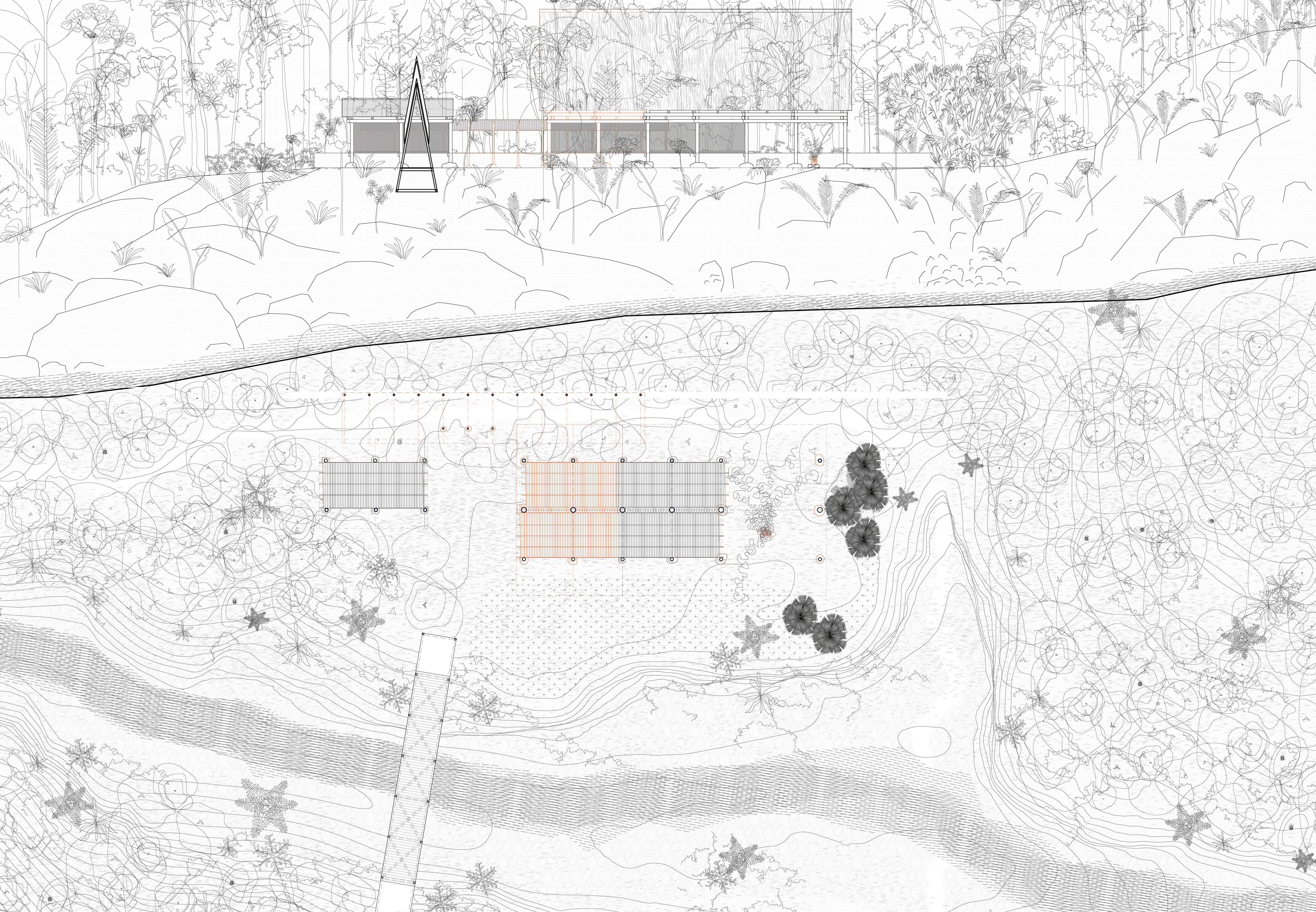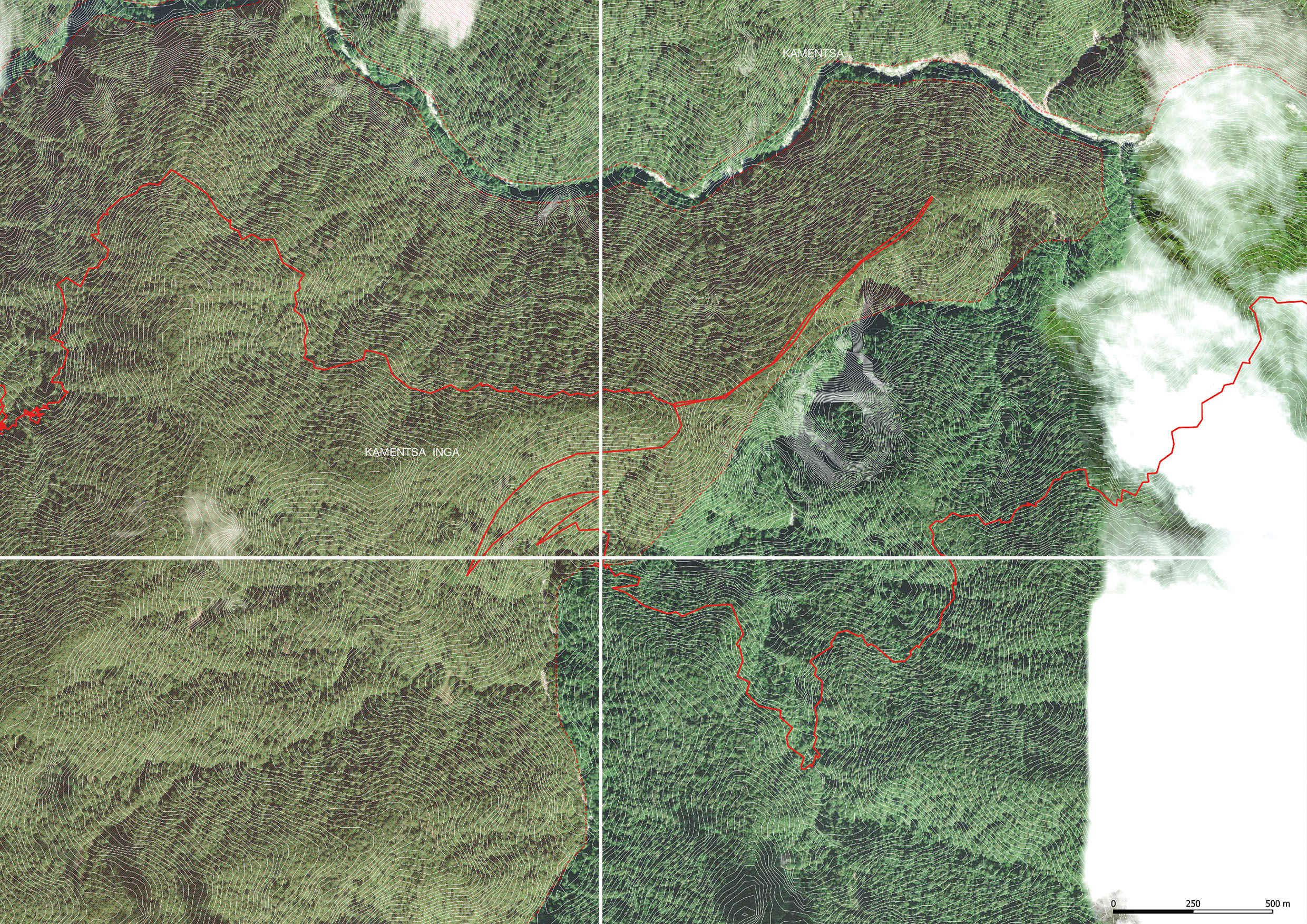
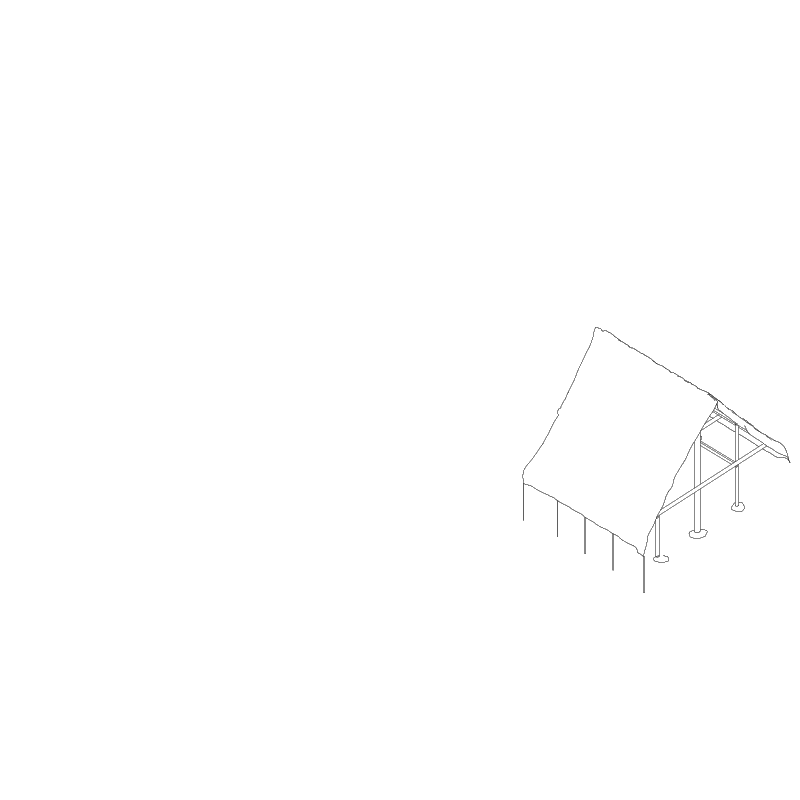

This site is situated next to the Tortues river inside a deep valley alongside the walk San Franci sco-Mocoa. Looking at the size of the stone, this river can grow a lot in rainy season. It's also surrounded by a thick jungle and is dificult to access.

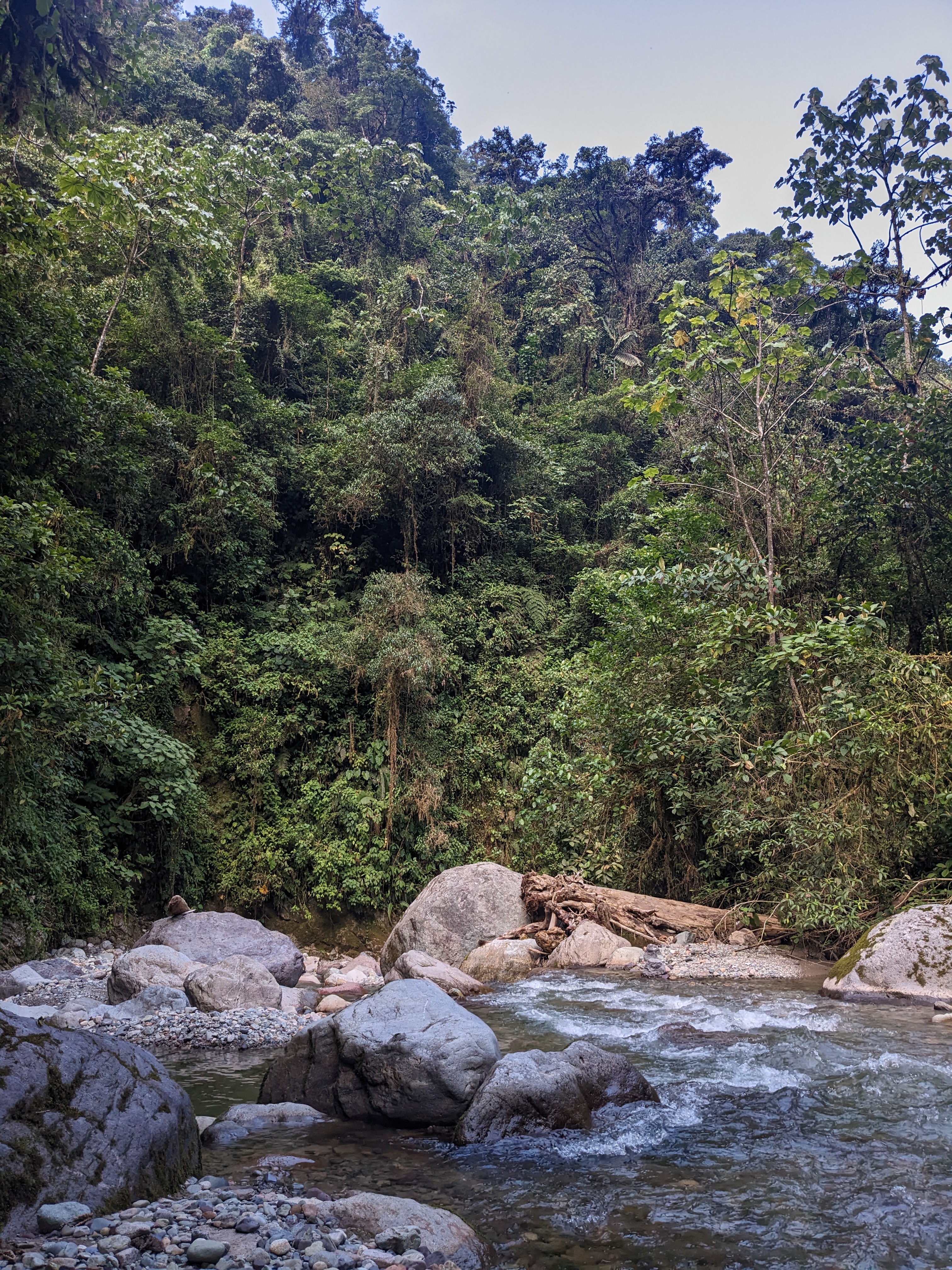
View of the Tortues river.
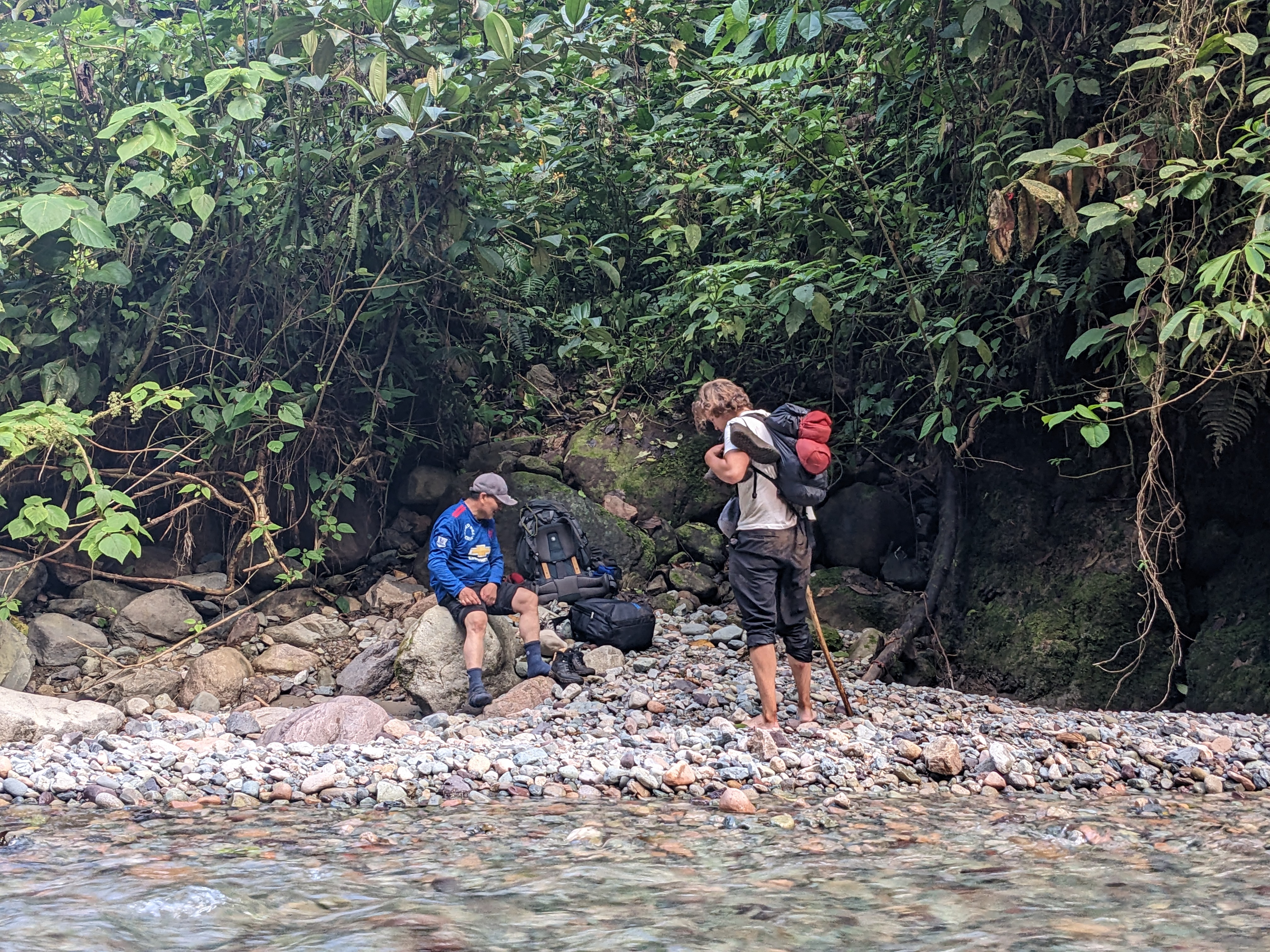
View from the river.
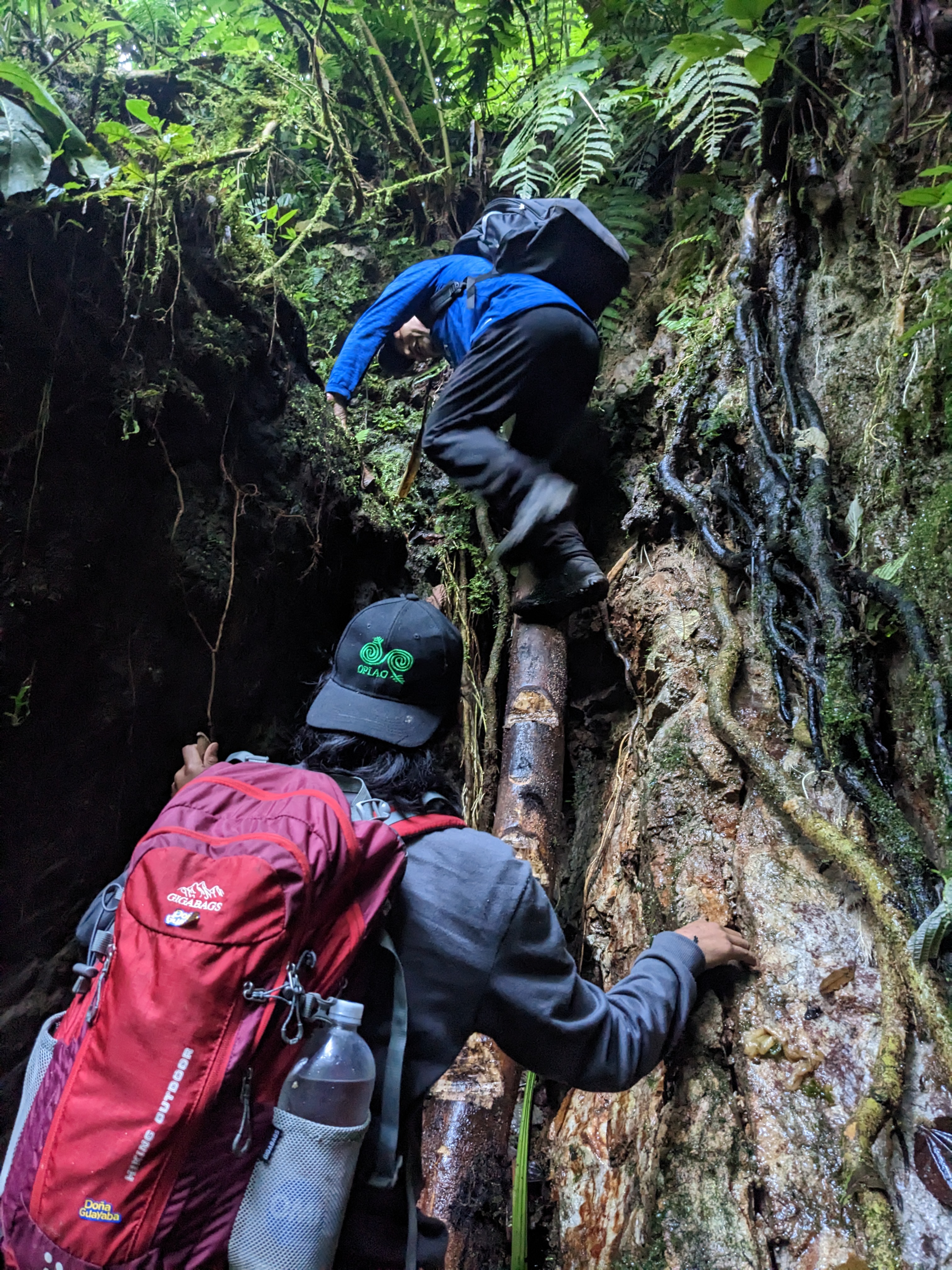
Going up to reach the small plateau of the tampu.
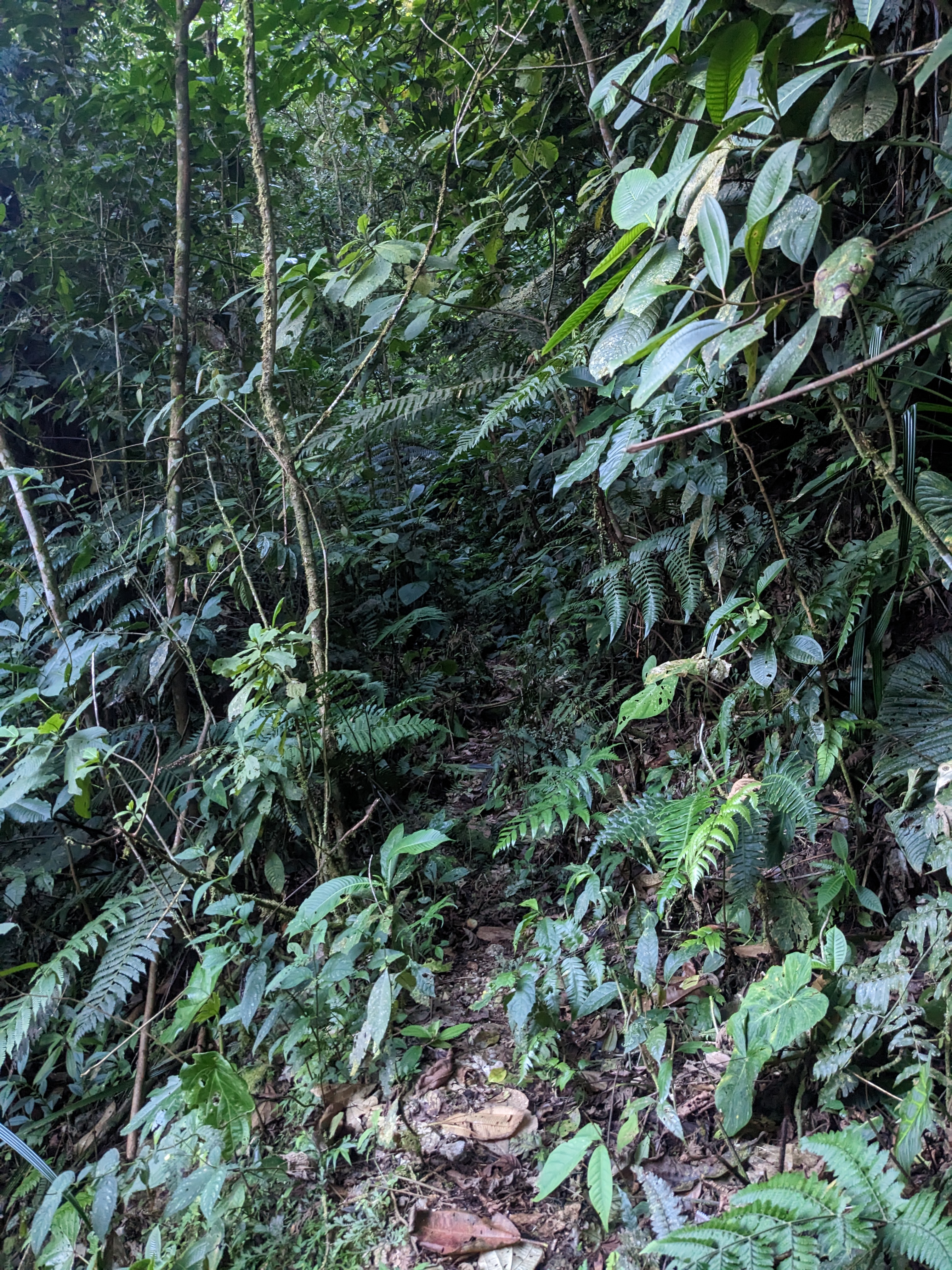
View of the path sourrounded by thick jungle.
Planting steps
The process of construction is made step by step, for a growing tampu.
Some materials are planted at the begining, like the Iraca used for the
traditional leave roofs. This palm takes only five years to grow.
1. First preparing the ground. This means clearing the plot from bushed
and reed and burn them to enrich the soil.
2. Planting and taking care of the chagra, including the iraca palm.
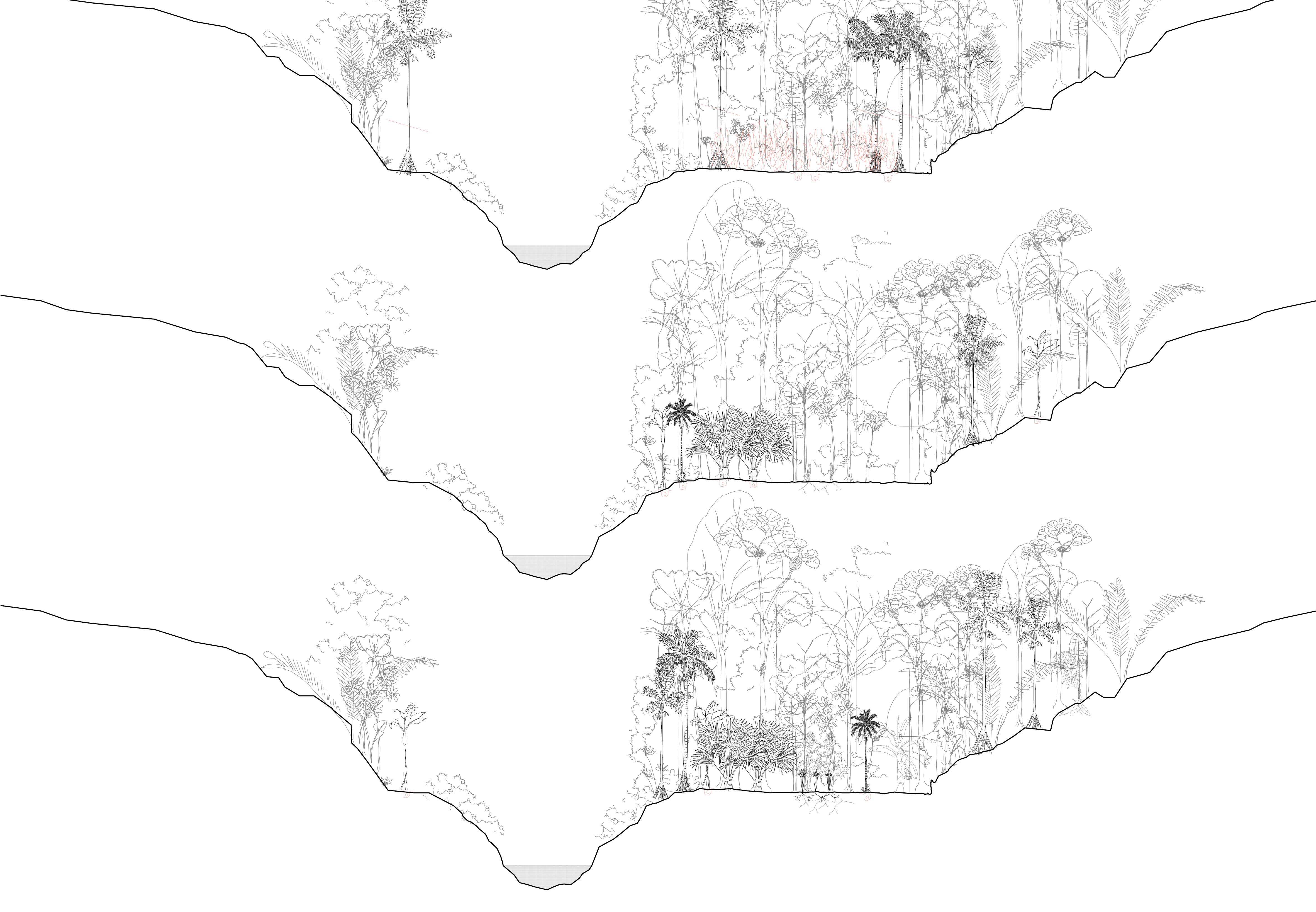
Step 1 - Build the tulpa space
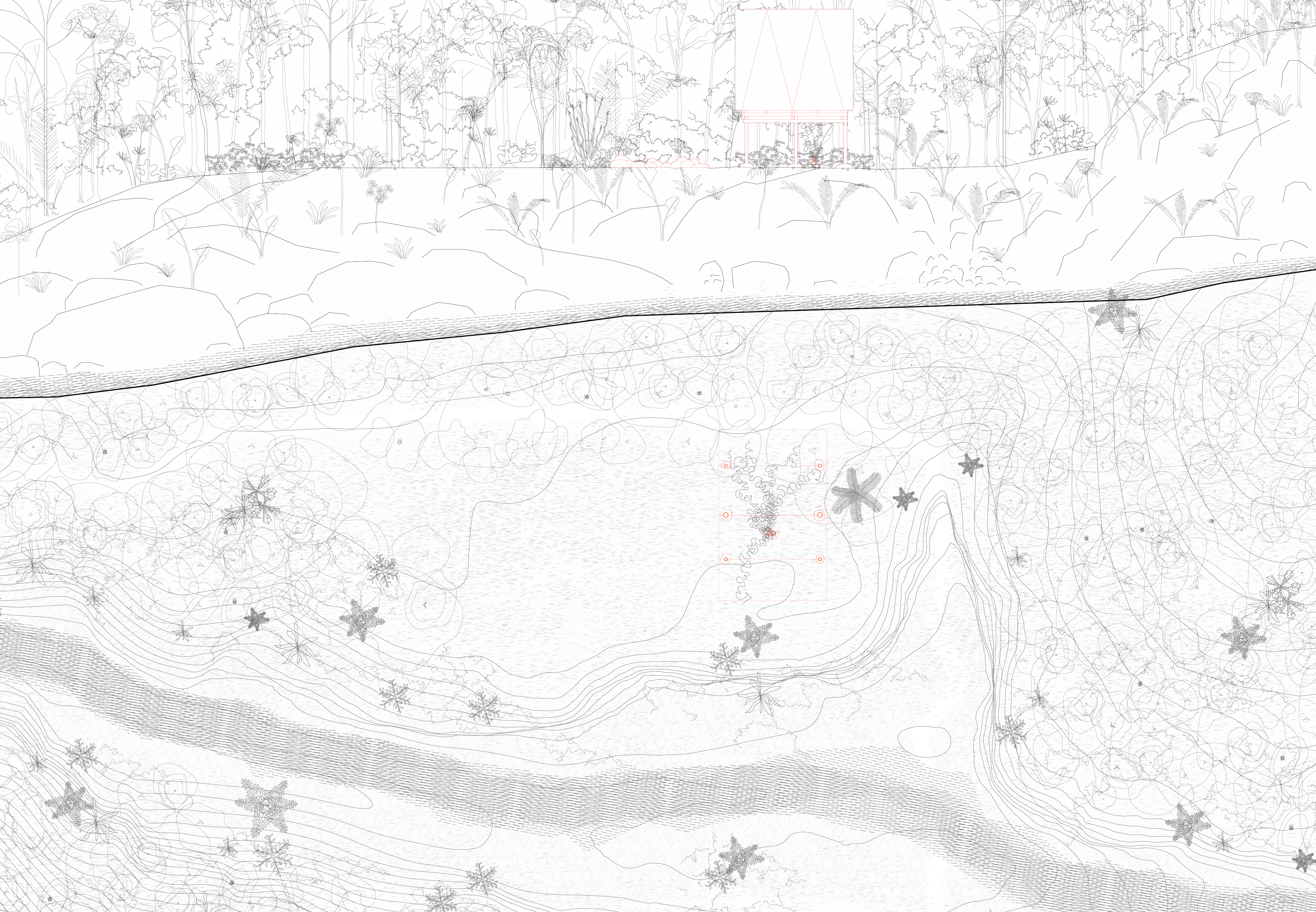
Step 2 - First Iraca roof
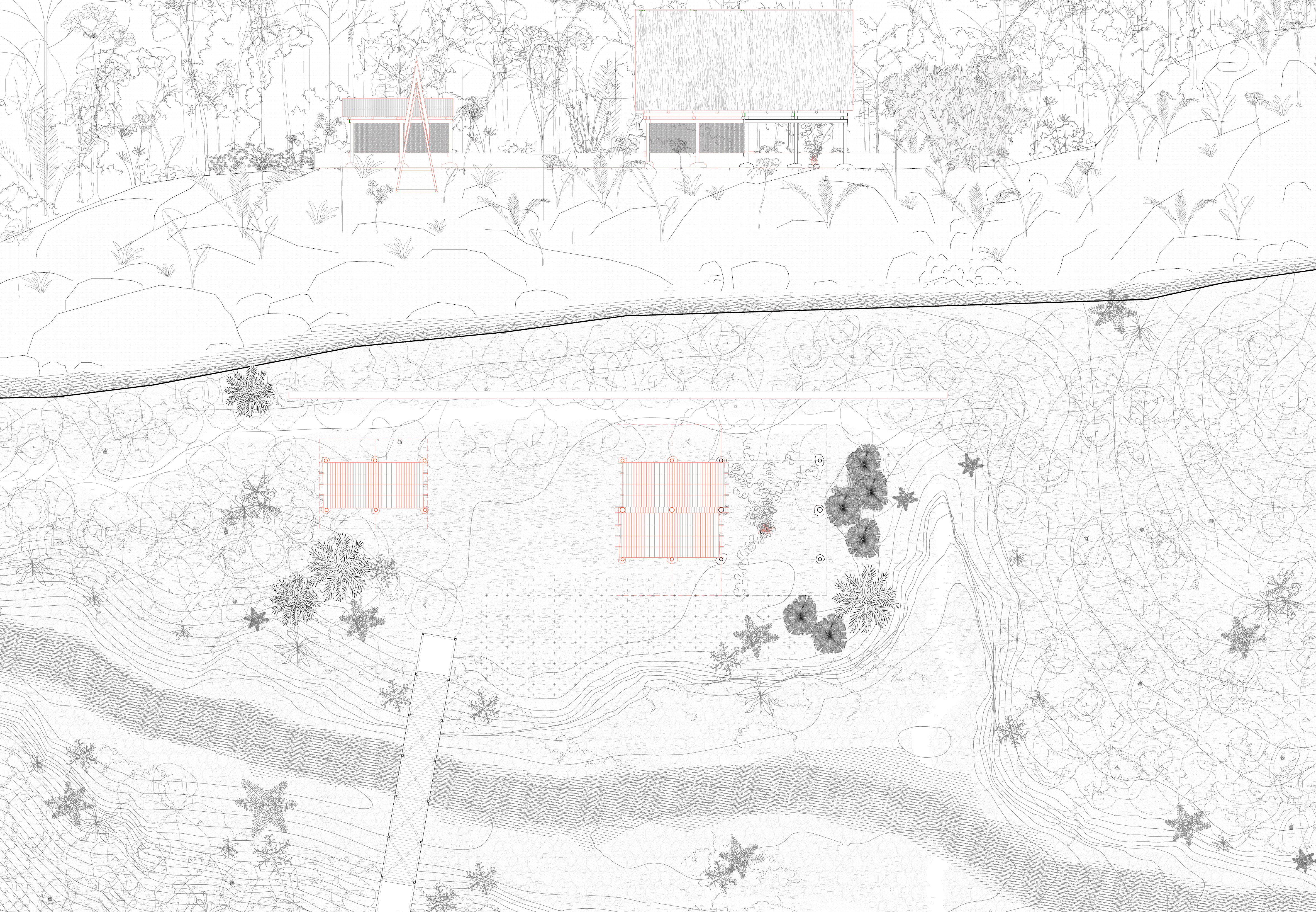
Step 3 - Three iraca roofs
